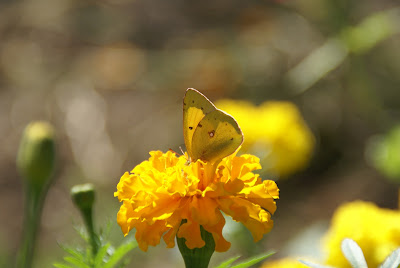You will want to amend your soil early especially if you are going organic. Organic soil amendments are better for the ground and your family, but they also take time to work their magic. I prefer to use sustainable gardening, this includes rotating my crops, companion planting, and no chemicals. I garden for a number of reasons, first and foremost, I truly enjoy it. I honestly never feel closer to God than when my hands are deep in the earth, except maybe when with awe and wonder I watch a little tiny seed become a massive plant that produces food. I also garden because I want to eat healthy and I want my family to eat healthy. Sometimes no chemicals is exhilarating, like watching this jungle form where there was only dirt before. And sometimes it's heartbreaking, like watching late blight take my entire tomato crop last year.
I am in New Jersey, the so-called Garden State, however that does not make my soil perfect. I learned last year what I needed to do to make my garden grow.
The first step is figuring out what kind of soil you have.
Step 1: Wait for rain. About 2-5 hours after a good hard rain, go out to your site. If there is still standing water, you can safely assume you will need to add sand, compost and probably some peat or peat alternative like
coco peat (as there is some question about the sustainability of peat and I do try to garden as sustainably as possible). All of those will help your drainage, which you have very little. These coco peat bricks will amend .33 cuft of topsoil.
Step 2: If there are no puddles pull out your shovel and loosen up a nice area of soil. Once loosed gather a handful of dirt and make a dirt ball.
(Soil Descriptions were taken from: Cornel University Cooperative Extension Agrinomy Fact Sheet Series Fact Sheet 29: Soil Texture. http://nmsp.cals.cornell.edu/guidelines/factsheets.html )
A clayey soil forms large, hard clods and cracks form on the surface. Clayey soils feel sticky and are bendable when moist. A ribbon can be formed when moist by pinching soil between fingers and thumb. A longer ribbon formed before it breaks indicates a higher amount of clay.
.
To amend Clay type soil, you will need to add organic materials like compost and humus.
A silty soil breaks apart easily and has a floury appearance when dry. When moist, silty soils have a slick feel and form no ribbon when pinched between fingers and thumb.
To amend silty soil you will need to add organic material but also sand or top soil. Silt is much too compact to allow for proper drainage.
A sandy soil feels gritty and falls apart easily if formed into a ball when moist.
Sandy soil needs organic material also but I add to it a bit of topsoil again.
The type of soil you are going for is loamy soil feels somewhat gritty, yet is easy to work; it has relatively even amounts of sand, silt, and clay; if formed into a ball when moist, it holds its shape, yet still breaks apart easily when squeezed.
I have found that adding
Miracle Gro Organic Garden Soil, Organic Top Soil and Compost or Humus in a 30-50-20 mix makes for a nice solid soil. I also tend to add sand, regular sandbox sand for my plants that call for sandier soil like okra and cucumbers. I do all this amending on my hands and knees. It's hard work but so amazing when you see what your hardwork produces.
I also add mulch to my garden all season long! I get a truckload delivered to my back yard just outside my garden in the late Spring, and just add it as needed throughout the summer. I use a mulch that decomposes into humus and provides a nice fertilizer throughout the year.
I also use companion planting to reduce weeding and watering. One great example of this is planting squash and gourds in my corn this allows the squash to spread out and cover the ground which keeps in water and keeps out weeds!
 |
| Corn just coming up, pumpkins beginning to spread |
 |
| Same view a few weeks later |
 |
| The gourds are beginning to climb the corn stalks, I kept pulling them off. |











































